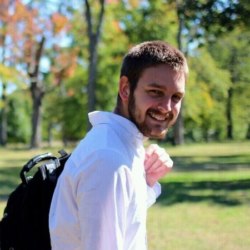Elon Musk‘s Hyperloop makes Brown’s bullet train obsolete
Twelve years before it’s supposed to be finished, the California High-Speed Rail (HSR) system is already outdated. While the state HSR Authority focuses on building infrastructure that dates back to the Kennedy era, the private sector has moved on. Elon Musk – who called High-Speed Rail “one of the most expensive per mile and one of the slowest in the world” – has proposed an alternative. In 2012, Musk, the California entrepreneur behind SpaceX and Tesla, offered the template for what he called hyperloop – a pneumatic tube through which people and cargo can rapidly move between cities.
Musk released his specs into the wild – theory, diagrams, the works – and declared it open source. The range of companies now involved in building and testing hyperloops sends a clear message to intercity transport enthusiasts – the government isn’t essential to the transit revolution.
In January 2017 three teams of researchers (from MIT, WARR in Germany, and Delft in the Netherlands) all successfully completed SpaceX’s first ever hyperloop pod competition. Over a short distance of 0.75 miles, WARR’s pod was the fastest in the tube, reaching a speed of 58 mph and coming to a successful stop. Over a longer distance the pods would have greater time to accelerate. By Musk’s projections, the pods would carry people at speeds of up to 760 mph and run from San Francisco to Los Angeles in 30 minutes and would cost roughly $6 billion dollars to build. The High Speed Rail is supposed to make the same trip in two hours and forty minutes (but won’t do so) and at a construction cost of $64 billion.
Los Angeles-based Hyperloop One, with its team of 200 engineers, has raised more than $160 million in capital and has completed the development of a test track in Nevada. The firm has also signed an agreement with DP World, the world’s third-largest port operator, to conduct a hyperloop feasibility study for freight movement in the UAE. Additionally, Dubai’s Road and Transport Authority commissioned Hyperloop One to do a feasibility study on potential passenger routes.
Another company, Transpod, expects to have a commercial prototype by 2020. Though Transpod has raised less money than Hyperloop One, it successfully closed a seed round of $15 million in 2016 and is looking to build its prototype in Canada. Hyperloop Transportation Technologies, a company with over 600 researchers that has raised $100 million in investment capital, is also exploring track locations in Australia. What’s weird about all this: California companies are flocking elsewhere to build and develop a technology conceived in California. With the High-Speed Rail Authority in the way, this comes as no surprise.
In just five years the hyperloop has progressed from a seemingly unreachable idea to initial testing – far more than what can be said for the California High-Speed Rail project. The state project is relying on technology first implemented in Japan in 1964. It’s a far cry from what Governor Jerry Brown called a “21st-century transportation system.” Cost has become another problem. In 2008, the estimated cost of the High Speed Rail project was $45 billion, but in its most recent business plan the HSR Authority quoted a cost of $64 billion to implement a much less extensive system. The railway project has a $40 billion funding gap and, despite seeking private funding, not a single investor has come forward.
Overall, the California’s taxpayers should not be propping up the obsolete railway system and the government should instead clear the way for a new future of transportation. As private companies, such as Hyperloop One, take matters into their own hands, there is no need for the government to develop intercity transportation. With the next hyperloop test competition on August 25-27th of 2017 and a total of 22 teams, it is important to ask “is California’s High-Speed Rail Authority stuck in the past?”
This fall California Policy Center and the Lincoln Network will sponsor a forum on Hyperloop and California High-Speed Rail in San Francisco. Check back in a few weeks for further details.
